With the government recently announcing that Green Homes Grants would be available to homeowners to update their properties and improve their environmental impact, many landlords will now have access to money that can bring their property’s rating up from ‘uninhabitable’.
EPCs, or Energy Performance Certificates, which determine the eco quality of a property, range from A to G. Properties to be rented out must be rated at least an E to be deemed ‘inhabitable’. However, EPC inspections have been difficult to track for councils across the country, so there is a chance that some properties will still have a low EPC rating despite being rented out.
The Green Homes Grant gives landlords the perfect opportunity to renovate their property, improving the quality of their tenants’ living space while also avoiding what could be as much as £20,000 in fines.
But where are these properties likely to be? We’ve studied open data to determine where landlords might be most eligible to receive the £5,000 Green Homes Grant from the government.
Which Regions Have the Most Renters?
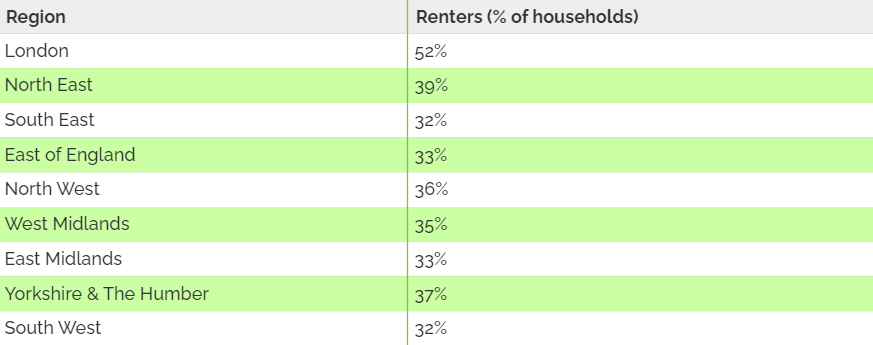
More than half of all Londoners are renters, far more than any other region, with the North East coming in second. The rest of the country has a more even share of renters, with renters in every other region making up between 30% and 40%.
From this table, it could be the case that London, the North East and Yorkshire and the Humber have more landlords that should be checking their EPCs, so we looked into these regions to find out where exactly the most F and G rating homes are.
Worst Constituencies in the top 3 Regions for Renters
We searched government data categorised by constituency to find out the areas in London, the North East and Yorkshire with the highest percentage of poor environmental ratings.
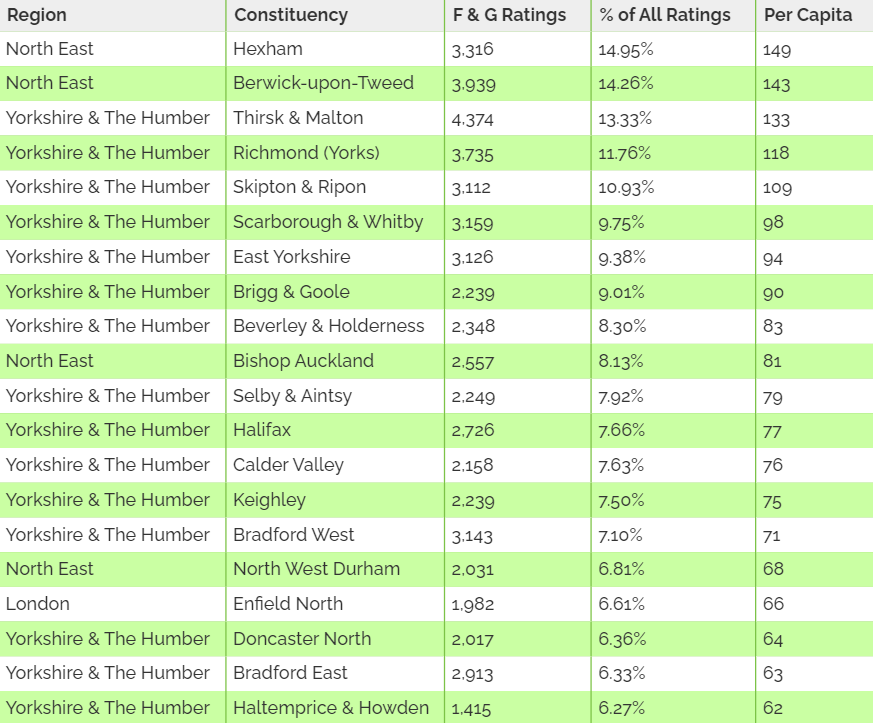
Though London has the highest percentage of renters in the country, only one of London’s constituencies made the top twenty in this listing. 15 of the worst constituencies across the three areas with most renters can be found in Yorkshire and the Humber. This is more than 41,500 homes that are in need of energy-saving upgrades.
However, the two worst spots in all three areas are in the North East. Landlords in Hexham and Berwick-upon-Tweed might want to check up on the energy performance of their properties to see if they qualify for the £5,000 grant.
A Closer Look at London
While the quality of London homes may not be so significant when compared with the rest of the country, the fact that over half of all the people living there are in rented accommodation is important and could mean that thousands of rented properties aren’t fit for purpose.
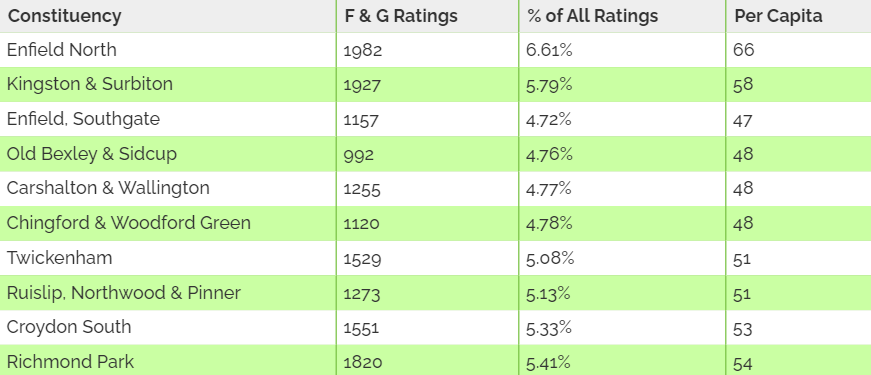
Overall, there are more than 82,000 properties with an EPC rating of F and G. If half of these properties are being rented, that could be more than 40,000 households living in homes that have been deemed ‘uninhabitable’.
Now is the perfect time to resolve this issue, as the government’s grant means landlords won’t have to pay as much for the improvements but will still be able to make countless homes cleaner and more efficient.
Highest Percentage of F & G Ratings Across England
When not considering where renters are most likely to live, the F & G rated properties in England paint a different picture.
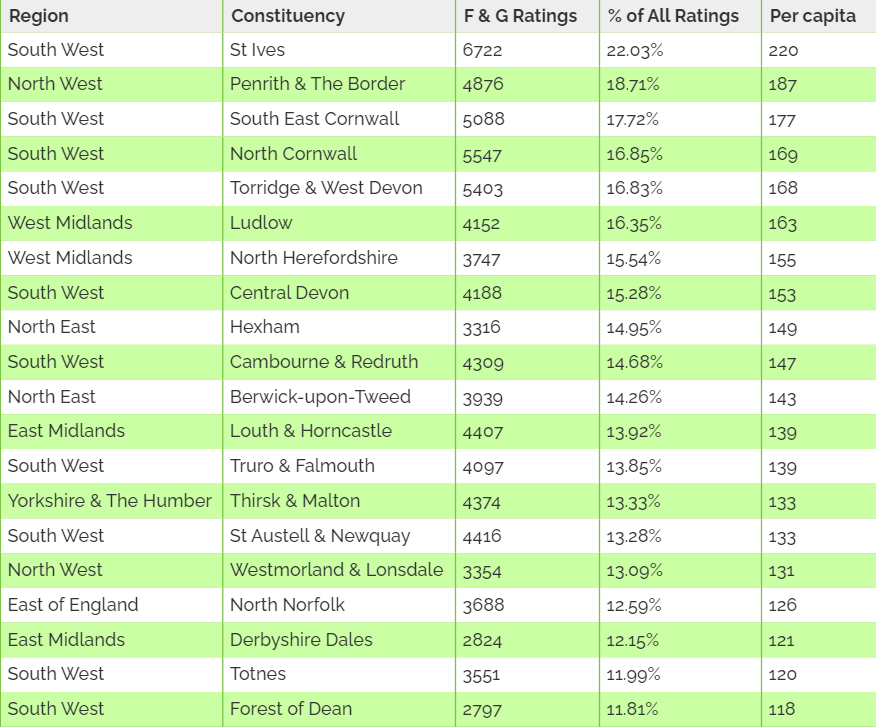
Half of these constituencies are in the South West, the region with the lowest percentage of renters in England. While some of these 46,000+ homes could be owned by private landlords, the likely is lower than in other parts of the country.
Still, homeowners in St Ives, Cornwall and Devon could be in for up to £5,000 back on the cost of upgrading their homes, so it’s a good idea to check your rating now to see if you’re eligible.
How Does This Affect Your Bills?
Since heating your home is one of the biggest residential uses of energy, a higher EPC rating generally means you consume less energy throughout the year. Though energy costs vary throughout the country, we’ve calculated the average cost at each EPC rating in each region.
Average Annual Use of Electricity by EPC Rating in kWh
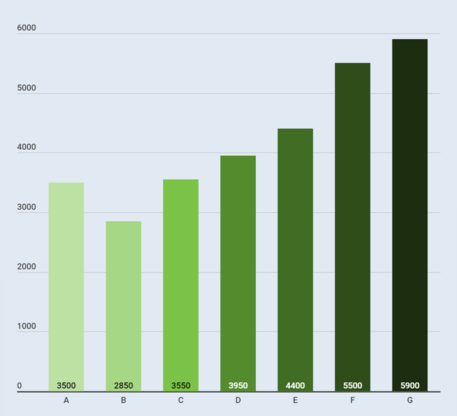
Average Annual Cost of Electricity (p/kWh)
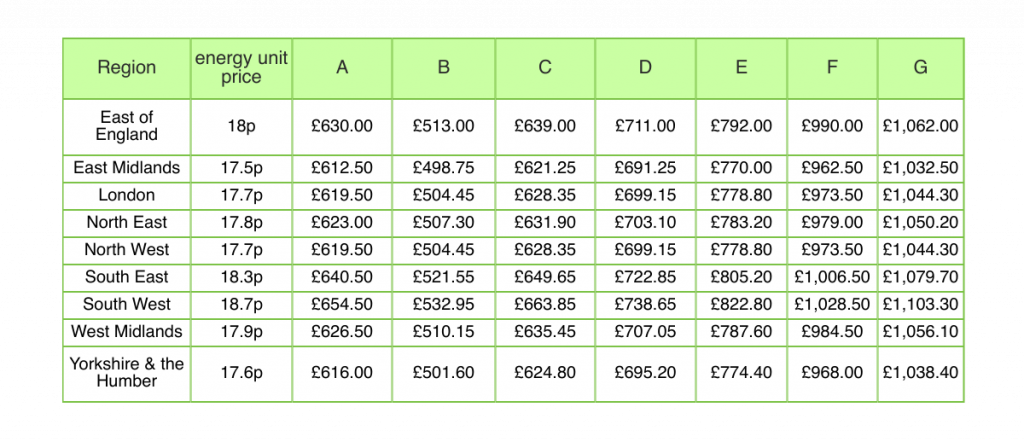
From this data, we’ve also determined the average saving of improving your EPC rating if it’s currently below an E.
Average Annual Savings When Improving an F Rating
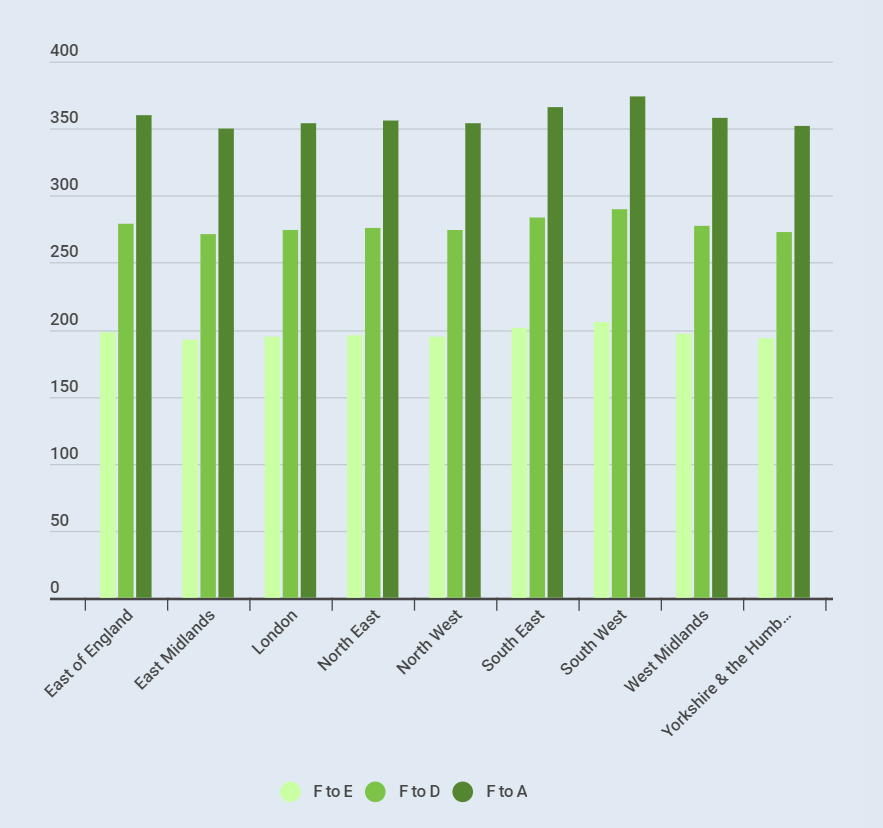
Houses in the South West have the most to gain, with an estimated saving of £205.70 when improving a home from an F to an E rating. Since D is the average EPC rating in the country, F-rated homes in the South West could be spending £289.85 more than the average every year.
Average Annual Savings When Improving a G Rating
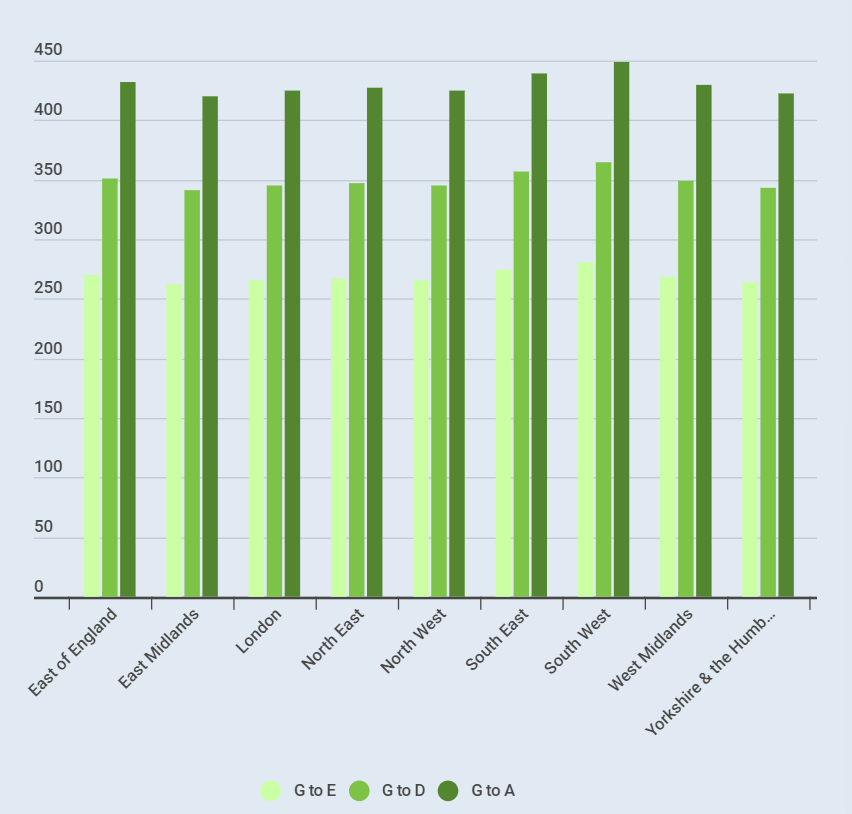
Slightly higher savings to be found when improving a G rating, the South West still has the most to gain with an annual saving of £280.50 by improving to an E.
For both F & G properties, the East Midlands sees the lowest savings (£192.50 going from F to E and £262.50 going from G to F). These are still considerable yearly savings, though, and should be encouraging for those looking to improve the quality of their home’s emissions.
Most Common Ways to Improve Your EPC Rating
When you receive an Energy Performance Certificate, there will be recommendations on how to improve the quality of the property and reach the next banding. These can range from small consumer changes to structural improvements.
Common EPC Recommendations
- Energy-saving bulbs
- Boiler replacement
- Loft insulation
- Double glazing
- Draught proofing
The recommendations will depend on the condition of your property, but undertaking a preliminary electrical performance report could help you identify areas of your property that need upgrading before you apply for the grant.
Aside from the environmental benefits, the average property could see a value increase of 14%, or as much as £16,000, by improving their energy performance score.
Methodology
For this study, we used data from OpenDataCommunities Energy Performance of Buildings Data. EPC ratings are valid for 10 years, so the F & G Ratings in this study are ratings listed on the database since 2010.
Percentage of households occupied by renters taken from ONS data.
To work out the average household consumption and annual energy costs, we took data from the Department of Energy & Climate and Nimblefins index of average unit costs.
InventoryBase can help with EICRs and electrical safety inspection reports with our online cloud & app based software to produce effective and professional inspection reports for your industry requirements.
For more information on Electrical Safety Inspection Reports, speak to one of our team members to arrange a demo and see how our software can help you.
Want to be a landlord? Check out or pre-tenancy advice for everything you need to know before your first tenants.
sales@inventorybase.com
0330 013 0308

